Tags
In traveling around the world, I often come across things I remember learning about in high school, and I smile to remember my reactions to them then. Yesterday, as my husband and I were devouring my fresh, Chilean-style ceviche, I remembered learning about ceviche in my freshman world geography class while studying South America – ten years ago now! – and thinking that raw fish in a lemon/lime marinade sounded about the grossest thing one could think to put in one’s mouth. Ten years changes so much. 14-year-old me certainly never imagined she would live in Santiago, Chile.
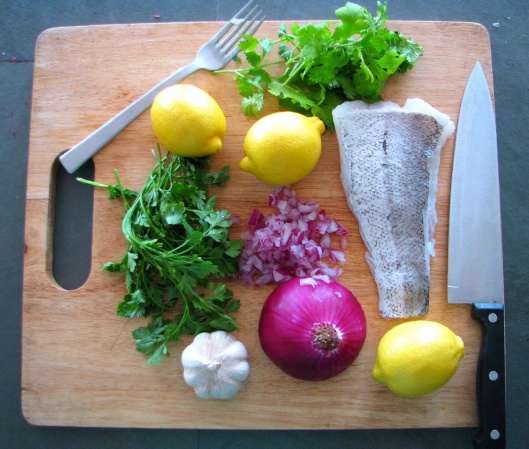 Ceviche, of course, isn’t exactly raw. Eating it is not like the (wonderful) slimy experience of eating sushi or even carpaccio. The acid in the citrus marinade cures the fish: according to Wikipedia, it denatures the protein, which gives it the texture and appearance of being cooked. Add some herbs and spices and it is delightful.
Ceviche, of course, isn’t exactly raw. Eating it is not like the (wonderful) slimy experience of eating sushi or even carpaccio. The acid in the citrus marinade cures the fish: according to Wikipedia, it denatures the protein, which gives it the texture and appearance of being cooked. Add some herbs and spices and it is delightful.
Part of the delight is its simplicity. This method of preparation is decidedly low-brow, despite the haute cuisine treatment it gets in the U.S., served in martini glasses and regarded as exotic. To make the most basic ceviche, all you need is fish and acid. You don’t need a stove or an oven, or any special cooking tools. You don’t really even need a refrigerator. As pointed out beautifully by Ernest Hemingway in The Old Man and the Sea, if you are a poor fisherman out on the water all day, you just need to bring limes on the boat with you to have a pleasant meal.
If you want more than basic ceviche, it’s still not complicated! I adapted the recipe below from this recipe, written by a Chilean blogger who adapted it from her mother’s recipe.
Ceviche (in a Chilean style)
Makes 2-3 appetizer sized servings
¼ c. + 1 Tbs. fresh lemon juice (juice from about 1 ½ lemons)
½ Tbs. vinegar (I used white wine vinegar)
½ Tbs. olive oil
1 tsp. salt
1 tsp. pepper
1 tsp. dried oregano
1 tsp. cumin
—-
8 oz. white fish, without skin*
—-
1/3 large red onion, chopped
2 large garlic cloves, minced or grated
A palm full of cilantro, chopped (about 1 ½ Tbs. when chopped)
A palm full of parsley, chopped
—-
Toasted bread or crackers for serving
*The author of the recipe I used as a basis says that her Chilean mother would use corvina, which is Chilean sea bass. She recommends tilapia. I used hake, which came out well. In general, I think any white fish would work, but it might take a little longer for some kinds to cure in the marinade. Some kinds (like the hake) will break down into smaller pieces so you have fewer large lumps of fish. It’s just a matter of taste.
Directions
1) Add all of the ingredients in the first block to a bowl and mix. Dice or flake your fish, and add it to the same bowl. Wait 30 minutes. (You can put it in the fridge or not.) While you are waiting, chop the rest of your ingredients.
2) Add next block of ingredients and mix well. You can eat the ceviche at this point, but I would recommend chilling it for about an hour.
3) Adjust the salt to taste. Serve with toasted bread and enjoy!
This recipe is just one variant – ceviche is common in the coastal areas all over South and Central America, and I’m sure there are as many ways to make it as there are people who eat it. I have seen recipes that include jalapeños, pineapples, mangoes, tomatoes – you name it. I’m looking forward to doing some experimentation in that regard 🙂
If you prefer to let someone else make your ceviche for you, a pro tip: I recommend ordering it only at lunch (unless you’re in a nice establishment that you’re sure is making it to order). The longer it sits around, the tougher and more acidic the fish. If the chef made it at 11AM, I don’t think you want to eat it past 1:30, especially if it’s not refrigerated.
On a personal side-note, Kevin and I are in Chile! Did I mention that? We are loving it here. The coast of Chile being so long means there is an incredible abundance of seafood, so expect to see more of that! I have eaten more sushi in the last six weeks than probably in the previous year, and I couldn’t be happier. Chau for now!

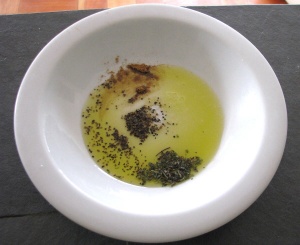
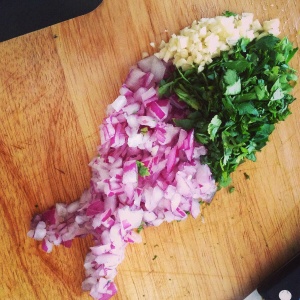
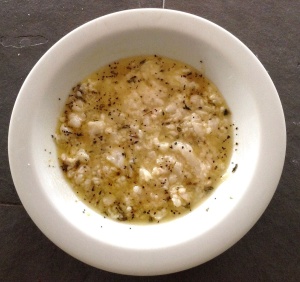
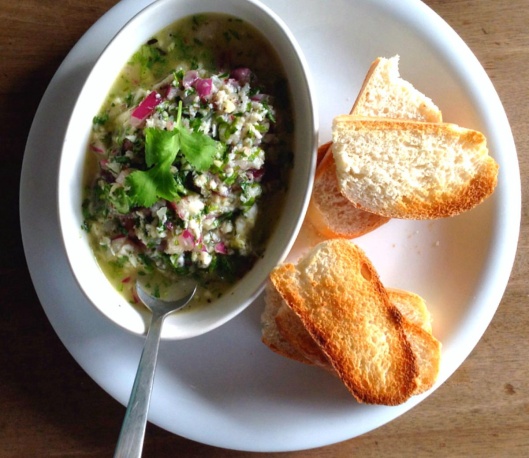
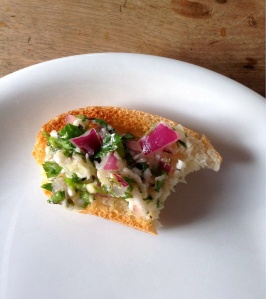
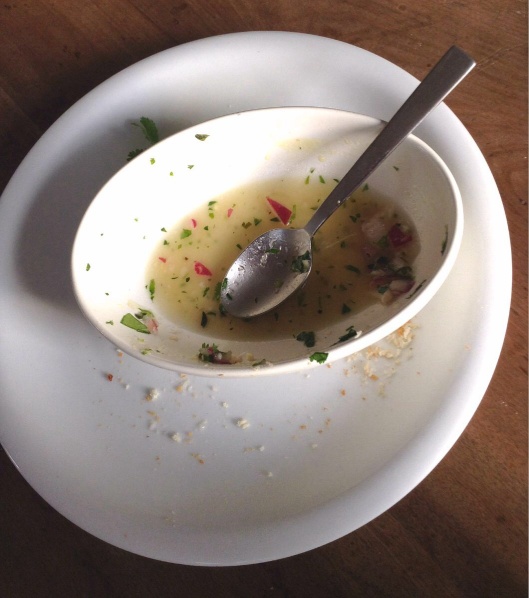
I fell in love with Ceviche during my year abroad in Santiago, awesome recipe I will have to give it a shot sometime!
I first tried Ceviche when volunteering in a local community in the Galapagos Islands. I can’t wait to try this Chilean version!
Thanks for stopping by! You should make it and report back on how different or similar you find it to what you had in the Galapagos! I’m very curious about it because I think that more ceviches are made with lime than lemon, and I wonder how different that makes the final product. I’ll make one with lime eventually…
Jane, your pictures are beautiful! Thanks for visiting the blog 🙂
Thank you for putting your recipe out there! It really is completely delightful.